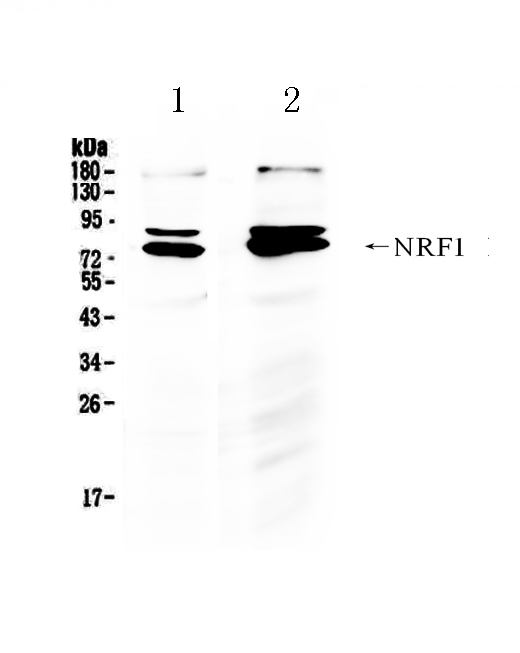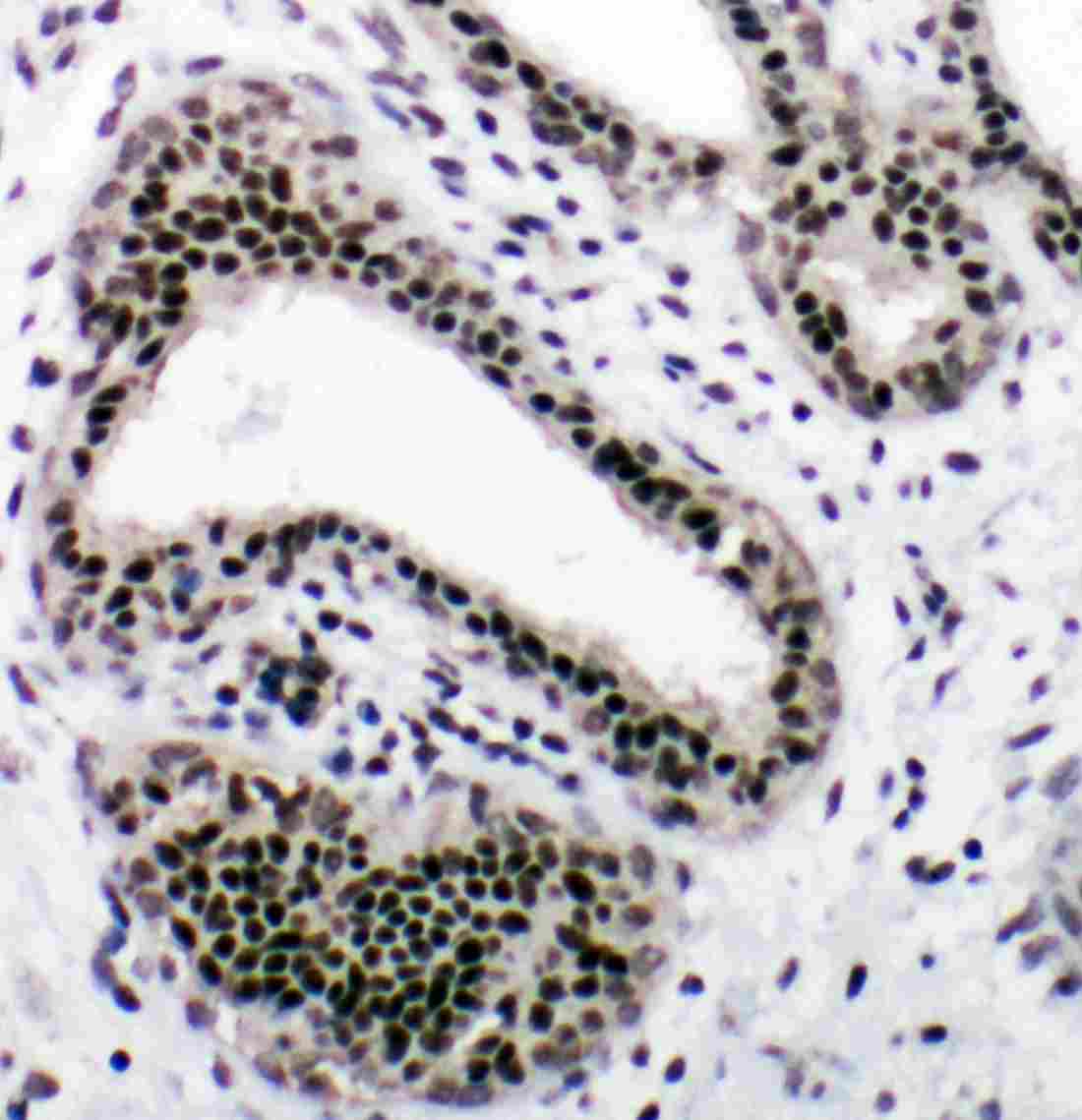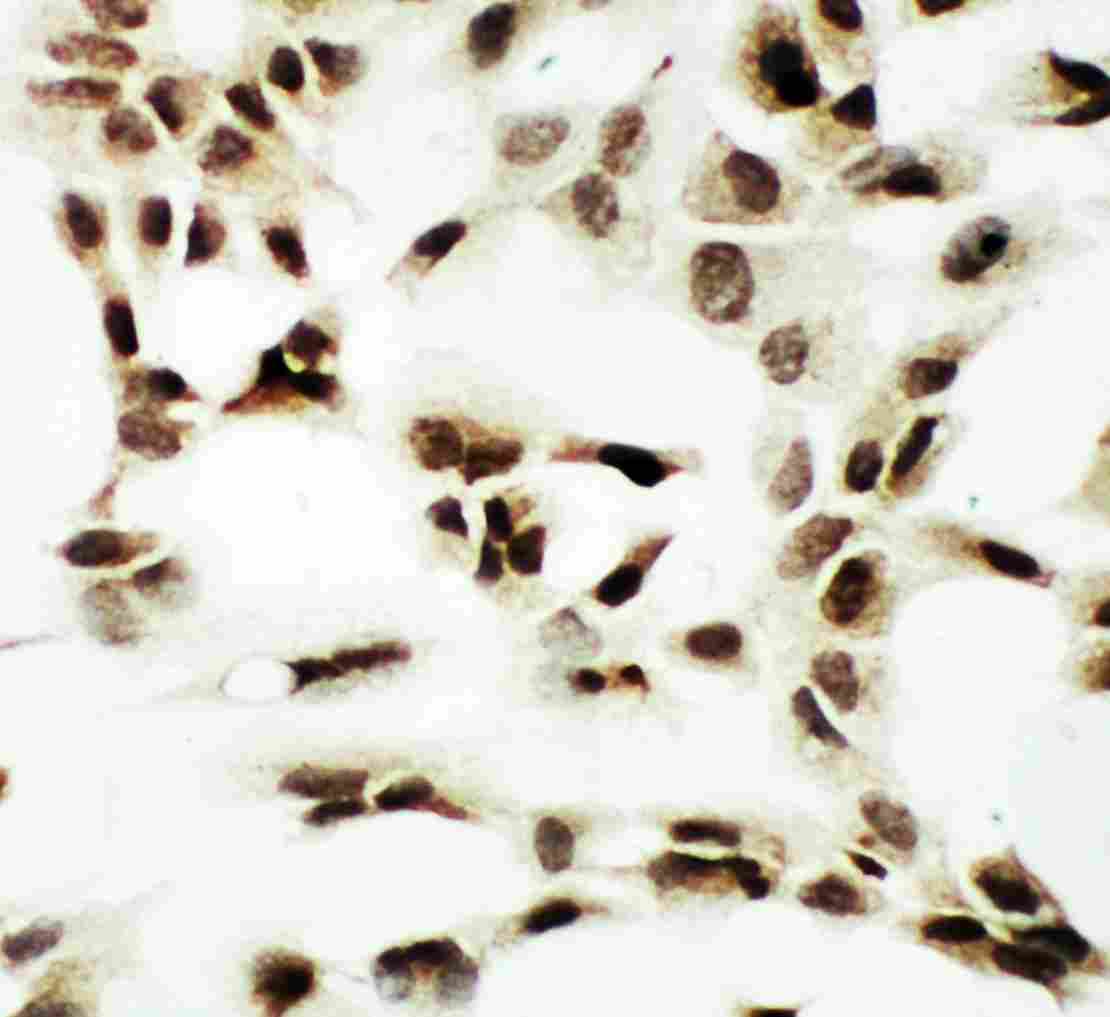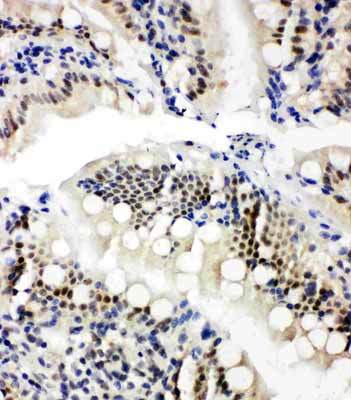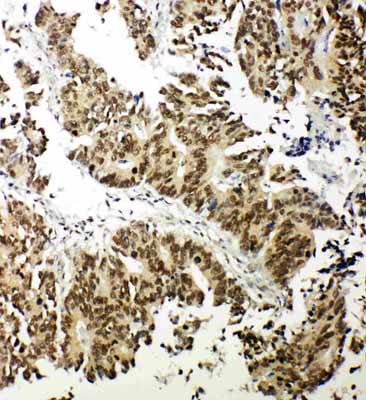Anti-NRF1 Antibody
- SPECIFICATION
- CITATIONS
- PROTOCOLS
- BACKGROUND

Application
| WB, IHC-P, ICC |
|---|---|
| Primary Accession | Q16656 |
| Host | Rabbit |
| Reactivity | Human, Mouse, Rat |
| Clonality | Polyclonal |
| Format | Lyophilized |
| Description | Rabbit IgG polyclonal antibody for Nuclear respiratory factor 1(NRF1) detection. Tested with WB, IHC-P, ICC in Human;Mouse;Rat. |
| Reconstitution | Add 0.2ml of distilled water will yield a concentration of 500ug/ml. |
| Gene ID | 4899 |
|---|---|
| Other Names | Nuclear respiratory factor 1, NRF-1, Alpha palindromic-binding protein, Alpha-pal, NRF1 |
| Calculated MW | 53541 MW KDa |
| Application Details | Immunocytochemistry , 0.5-1 µg/ml, Human, Mouse, Rat Immunohistochemistry(Paraffin-embedded Section), 0.5-1 µg/ml, Human, Rat, Mouse, By Heat Western blot, 0.1-0.5 µg/ml, Human, Rat, Mouse |
| Subcellular Localization | Nucleus. |
| Tissue Specificity | Ubiquitously expressed with strongest expression in skeletal muscle. |
| Protein Name | Nuclear respiratory factor 1 |
| Contents | Each vial contains 5mg BSA, 0.9mg NaCl, 0.2mg Na2HPO4, 0.05mg Thimerosal, 0.05mg NaN3. |
| Immunogen | A synthetic peptide corresponding to a sequence in the middle region of human NRF1(272-288aa QHGREDLLYAFEDQQTQ), identical to the related rat and mouse sequences. |
| Purification | Immunogen affinity purified. |
| Cross Reactivity | No cross reactivity with other proteins |
| Storage | At -20˚C for one year. After r˚Constitution, at 4˚C for one month. It˚Can also be aliquotted and stored frozen at -20˚C for a longer time.Avoid repeated freezing and thawing. |
| Sequence Similarities | Belongs to the NRF1/Ewg family. |
| Name | NRF1 |
|---|---|
| Function | Transcription factor that activates the expression of the EIF2S1 (EIF2-alpha) gene. Links the transcriptional modulation of key metabolic genes to cellular growth and development. Implicated in the control of nuclear genes required for respiration, heme biosynthesis, and mitochondrial DNA transcription and replication. |
| Cellular Location | Nucleus. |
| Tissue Location | Ubiquitously expressed with strongest expression in skeletal muscle |

Thousands of laboratories across the world have published research that depended on the performance of antibodies from Abcepta to advance their research. Check out links to articles that cite our products in major peer-reviewed journals, organized by research category.
info@abcepta.com, and receive a free "I Love Antibodies" mug.
Provided below are standard protocols that you may find useful for product applications.
Background
NRF1(Nuclear Respiratory Factor 1), also known as Alpha-Pal. Gopalakrishnan and Scarpulla(1995) analyzed DNA from a panel of human/hamster cell hybrids using human-specific NRF1 PCR primers and localized the NRF1 gene to human chromosome 7. The assignment was further refined to 7q31 by cohybridization of NRF1- and chromosome 7-specific probes to human metaphase chromosomes. Efiok et al.(1994) identified genes containing alpha-Pal-binding sequences and found that these could be classified either as cellular proliferation genes, or as genes regulating the growth-responsive metabolic pathways of energy transduction, translation, and replication. Virbasius and Scarpulla(1994) noted that the nuclear-encoded mitochondrial transcription factor TFAM contains potential binding sites for NRF1, NRF2(GABPA) and SP1 within the promoter region. With use of binding and electrophoretic mobility shift assays, DNase footprinting, and mutation analysis of recombinant proteins, they demonstrated specific and functional binding of NRF1 and NRF2 to the TFAM promoter region.
If you have used an Abcepta product and would like to share how it has performed, please click on the "Submit Review" button and provide the requested information. Our staff will examine and post your review and contact you if needed.
If you have any additional inquiries please email technical services at tech@abcepta.com.













 Foundational characteristics of cancer include proliferation, angiogenesis, migration, evasion of apoptosis, and cellular immortality. Find key markers for these cellular processes and antibodies to detect them.
Foundational characteristics of cancer include proliferation, angiogenesis, migration, evasion of apoptosis, and cellular immortality. Find key markers for these cellular processes and antibodies to detect them. The SUMOplot™ Analysis Program predicts and scores sumoylation sites in your protein. SUMOylation is a post-translational modification involved in various cellular processes, such as nuclear-cytosolic transport, transcriptional regulation, apoptosis, protein stability, response to stress, and progression through the cell cycle.
The SUMOplot™ Analysis Program predicts and scores sumoylation sites in your protein. SUMOylation is a post-translational modification involved in various cellular processes, such as nuclear-cytosolic transport, transcriptional regulation, apoptosis, protein stability, response to stress, and progression through the cell cycle. The Autophagy Receptor Motif Plotter predicts and scores autophagy receptor binding sites in your protein. Identifying proteins connected to this pathway is critical to understanding the role of autophagy in physiological as well as pathological processes such as development, differentiation, neurodegenerative diseases, stress, infection, and cancer.
The Autophagy Receptor Motif Plotter predicts and scores autophagy receptor binding sites in your protein. Identifying proteins connected to this pathway is critical to understanding the role of autophagy in physiological as well as pathological processes such as development, differentiation, neurodegenerative diseases, stress, infection, and cancer.
